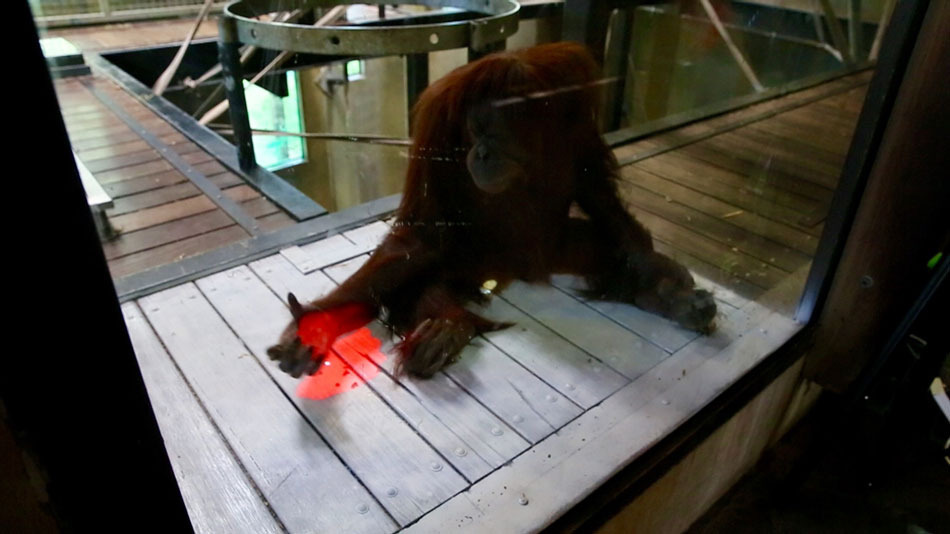
Humans are not the only animals into video games, it turns out.
In a research project that began Monday, orangutans at Australia’s Melbourne Zoo are being entertained with interactive projections from an Xbox Kinect, a motion sensing device built for the gaming console. According to an emailed statement from Microsoft, which designed the device, the experiment is focused on how the creatures learn and interact with technology.
The project is a world first, say researchers from Zoos Victoria and the University of Melbourne’s Microsoft Research Centre for Social Natural User Interfaces.
Using the Kinect, the researchers have created a game called “Zap,” which features a projected red dot that will explode when touched. A twelve-year-old orangutan, Malu, is described as spotting the red dot and kissing it, causing the projection to scatter more light.
They have plans to display more games using the Kinect in ways that could even adapt to the captive orangutans’ individual personalities and interests.
Tablets and other devices have been used with orangutans before, but they require a human present to hold the device and stop the strong animals from breaking it. “They enjoyed using the tablet but we wanted to give them something more, something they can use when they choose to,” animal welfare specialist at Zoos Victoria, Sally Sherwen, explained. “We think that by providing new experiences and promoting positive behaviours, this form of digital enrichment may have the potential to significantly improve their welfare.”
“By having all the technology on the outside and using these emerging technologies that allow for touch detections on projected surfaces we are able to circumvent the safety issue,” said University of Melbourne researcher, Marcus Carter.

Eventually, it’s also hoped such systems will help keep the creatures from getting bored. In a zoo, the animals don’t need to worry about where their food and shelter is going to come from, Sherwen said, so they need to be kept busy and engaged in new ways.
It could also one day provide a unique link between humans and the animals. “If we design an interface they understand they could use it to communicate things about their welfare,” added Carter.